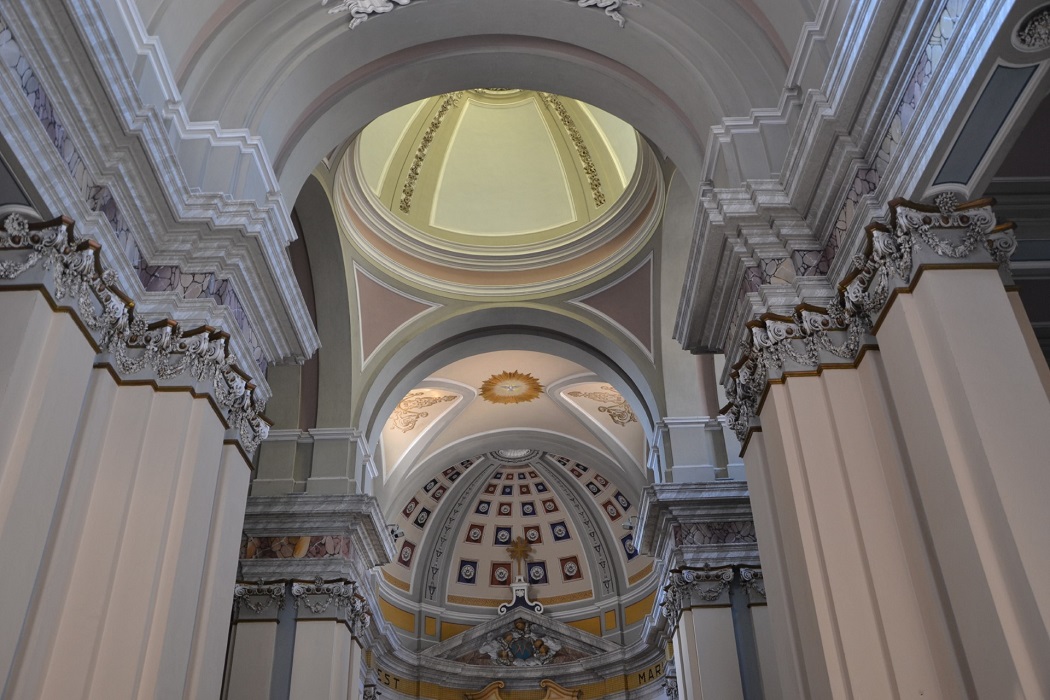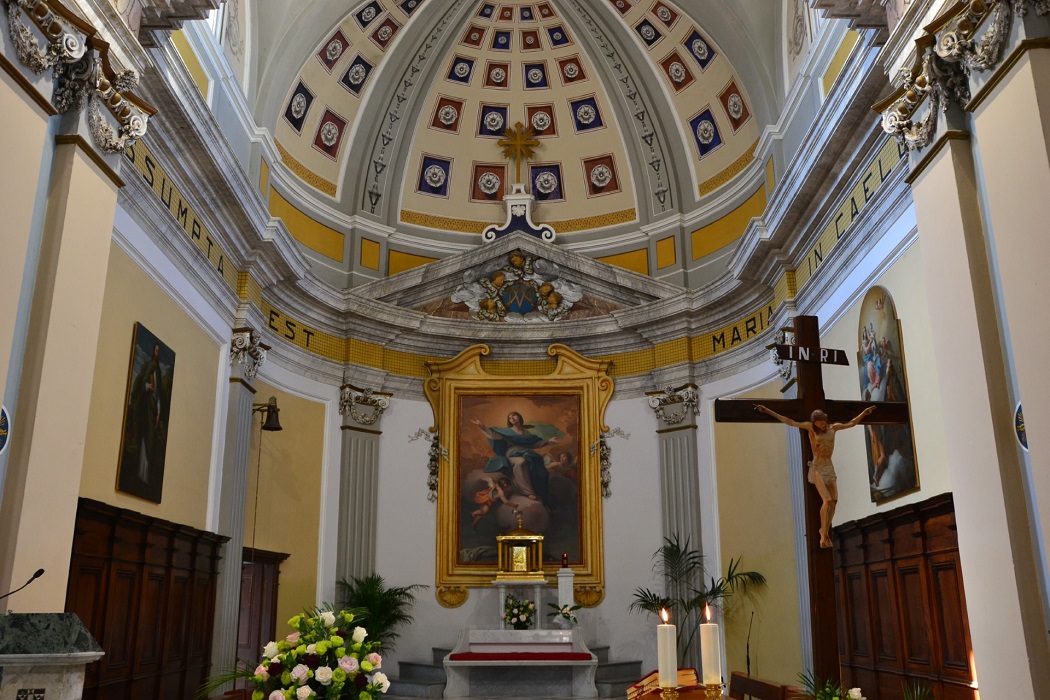The church of the Assumption into Heaven and St Vivenzio in Blera dates back to the eleventh century.
It was then completely remodeled and the original Romanesque nucleus can be seen in the crypt where the tomb of San Vivenzio, patron saint of the city, is located.
Here there is also a valuable altar made from a Roman sarcophagus with a bas-relief depicting hunting scenes.
The architecture of the church dates back to 1538, as reported in an inscription on an architrave, and has a characteristic sixteenth-century façade.
You arrive through a wide staircase that allows you to reach the level of the second church, that one above the crypt, and then you enter through three entrance doors that correspond to the three naves.
The interior has a classic style with decorations that divide the part of the columns from the roof with a barrel vault.
The central nave ends in an area with a choir and an apse. Here is the main altar with a painting of the sixteenth century by Antonio da Bassano with the Virgin ascending to heaven.
The church has a small central dome with a lantern from which light filters in order to give impressions to the whole complex.
Inside there are some eighteenth-century paintings and a baptismal font in carved marble.
A bell tower in the same style is located next to the church and completes its image.
The church is a point of reference for all the faithful of San Vivenzio, who is also the patron saint of the village.
Vivenzio was a hermit who later became bishop of Blera from 457 to 484 when he died and was buried in this city.
There are no certain documents that prove its history but for example, a bull of Pope Sixtus IV of 1471 authorizes the citizens of Blera to sell grain to Civitavecchia so that with the proceeds they can embellish the tomb of San Vivenzio with a bust.









Follow us